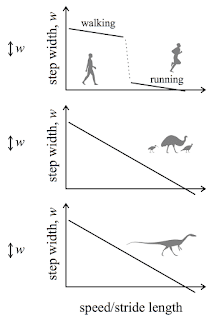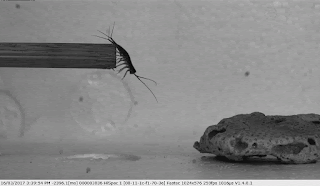Dinosaur biomechanics
 Thought I would post a couple of link to some videos of quails running which were part of our study into the way theropod dinosaurs may have moved.
Thought I would post a couple of link to some videos of quails running which were part of our study into the way theropod dinosaurs may have moved.Links to the study is here
We compared measurements of step width against the speed of the animal, measured directly for the modern species, or by using stride length as a proxy for the extinct theropods.
In all three groups, step width decreased with increasing speed. In other words, as the animal moved faster, the left and right feet were placed closer towards the body midline, and at the fastest speeds of locomotion, the feet could even cross over the midline.
So this told us that the extinct theropods that made the footprints were at least following the same general principle seen in modern bipeds.
Interestingly, however, the way in which step width decreased with increasing speed was different between the three groups.
This pattern of similarity and contrast suggests that the extinct theropods were moving more like modern birds than humans.
Furthermore, a gradual or continuous change with speed has been previously observed for many other measurements of locomotion in birds, such as stride length and step frequency.
Birds therefore have what is called a “continuous locomotor repertoire” – that is, walking and running are not distinct gaits (as they are in humans), but instead they transition seamlessly from one to the other.
The extinct theropods that made the footprints were probably also using a similarly continuous locomotor behaviour.



Comments
Post a Comment